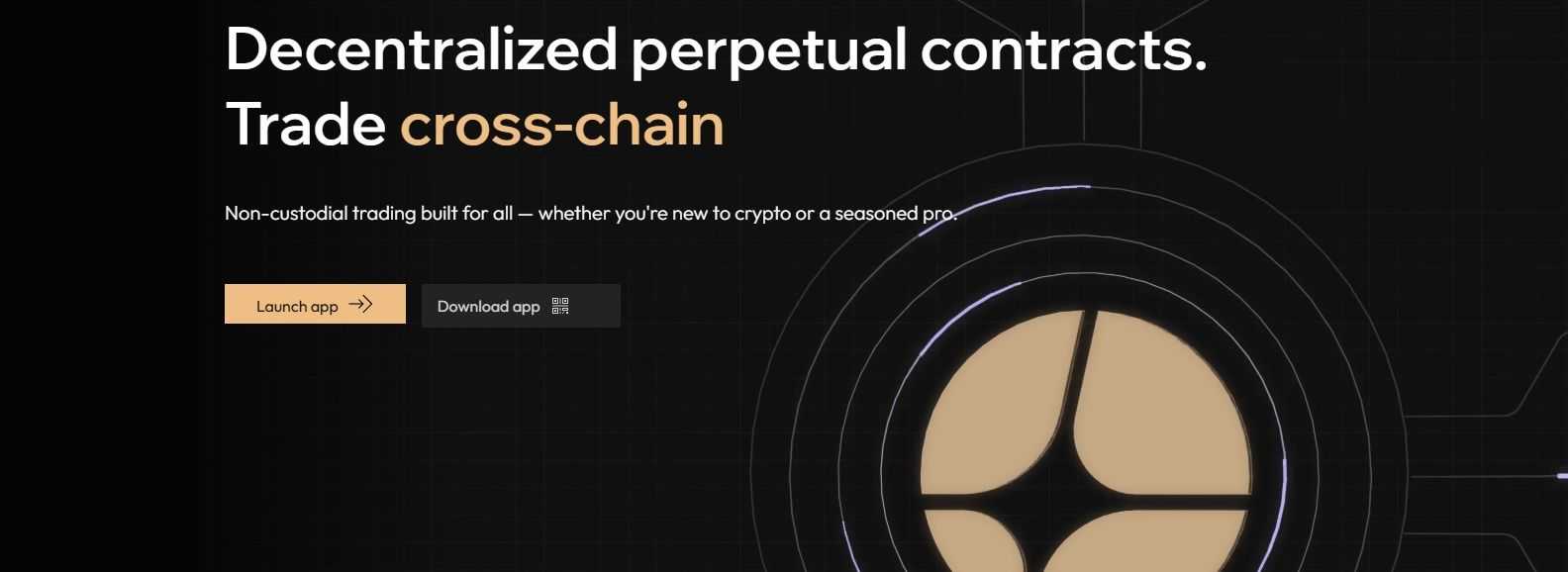Perpetual futures used to be the wild side of crypto, where speed beat safety and liquidity vanished when you needed it most.
That picture is changing. In 2025, two venues define the new playbook for on-chain perps: Aster, a multi-chain exchange with tokenized stocks, rich incentives, and high leverage; and Hyperliquid, a performance-first chain built for trading.
This guide compares how they are built, how they trade, and who they suit.
Head-to-Head Comparison Table
Please note that the figures and numbers keep changing in the industry. The table carries numbers as of Oct. 23, 2025.
| Feature | Aster | Hyperliquid |
|---|---|---|
| Architecture | Multi-chain access across BNB, Ethereum, Solana, Arbitrum; Pro mode documented here. | Custom L1 with HyperCore (order-book engine) + HyperEVM (EVM exec layer); overview here. |
| Max leverage | Up to 1001× on selected markets; stocks show 50× cap. | Varies by asset (3×–40×); maintenance margin notes here. |
| Perp pairs | No single official count page; crypto + 24/7 stock perps. | Docs state 100+ assets supported; permissionless additions via HIPs. |
| TVL | No official “protocol TVL” figure emphasized in docs. Coingecko shows it at around $1.79 million | L1 TVL is tracked by third parties (methodology differs from order-book TVL) — see CoinGecko chain page for context. |
| OI (Oct. 23, 2025) | ~$3.2B open interest via DefiLlama. | ~$6.91B 24h OI via DefiLlama |
| Fee model & discounts | Perps 0.005% maker / 0.04% taker; 5% discount when paying in $ASTER | Fees tiered by rolling 14-day volume; fees directed to community sinks incl. HLP & Assistance Fund. |
| Token supply / circulating / FDV | Max supply 8B ASTER; circulating not formally maintained on docs | Max supply 1B HYPE; circulating varies by tracker |
| Rewards / APY hooks | Rewards Hub (Rh points); fee discounts; yield-bearing collateral via Trade & Earn. | Community sinks and Assistance Fund; incentives via HIP proposals; APY rates not published |
| Audits | Yes | Yes |
| Governance / operational control | Token-based governance intent in docs; risk levers (funding, increments, leverage) tunable by team per product pages. | Validator-run L1; policy via HIPs; Assistance Fund actions require validator quorum. |
| Execution / latency | No formal latency/throughput SLA published in docs. | Docs and wiki describe sub-second/200k-TPS design goals for the L1: (No formal external SLA.) |
Aster optimizes for breadth and incentives across several networks. Hyperliquid concentrates liquidity and control on a single high-performance chain with documented latency and order-rate claims.
We have also covered the topic in our YouTube video:
The 2025 Context: From AMMs to On-Chain Orderbooks
Decentralized trading has matured from liquidity bootstrapping to execution discipline. The contest now revolves around engines, latency budgets, and how well venues behave under stress.
DEX Wars, Phase 2
The first wave popularized automated market makers, which pulled TVL into programmable liquidity and made long-tail markets possible. As spreads tightened and traders demanded fair matching and partial fills, attention moved to on-chain order books and purpose-built stacks where sequencing, oracles, and risk controls behave more like professional venues.
Perpetual futures concentrate leverage, hedging, and price discovery in one always-on instrument, so their notional turnover often eclipses spot during active periods. That draws market makers and sophisticated retail who care about fees, latency, and liquidation logic as much as listings. Alongside Hyperliquid and Aster, Lighter has emerged as a third force in this phase, reinforcing that today’s DEX race is a competition of execution quality, not just headline TVL.
With execution at the center, the meaningful differences now lie in architecture and risk handling. That is the lens through which we apply the comparisons that follow.
Platform Overviews
Let's take a quick look at how each venue is built and what traders feel in practice.
Hyperliquid

Hyperliquid runs a purpose-built layer one for on-chain trading. HyperCore handles execution, while HyperEVM hosts apps. HYPE is the native asset, and fees route to community sinks that include the Assistance Fund.
Permissionless perps and native money
Builders can deploy markets through HIP-3 with their chosen oracle and risk limits. The network introduced USDH as a native stablecoin. Community culture is visible in Hypurr.
What traders feel
Listings center on major crypto perpetuals, high leverage on flagships, and a gas-abstracted interface for quick submission and finality.
Aster

Aster combines APX Finance and Astherus. Migration steps direct users to convert APX to ASTER inside the spot account.
Where can you trade
Coverage spans BNB Chain, Ethereum, Solana, and Arbitrum, and can be viewed in the product navigation.
What stands out
Aster lists stock perpetuals in addition to crypto, offers Hidden Orders in Pro Mode, and enables yield-bearing collateral such as BNB and USDF via the Trade and Earn workflow.
To summarize, Hyperliquid concentrates execution inside a single chain with community-aligned economics. Aster spreads reach across several networks with feature depth for active users. These foundations inform the technical comparison that follows.
Core Technology Comparison
The engineering choices behind each venue determine how orders are sequenced, settled, and safeguarded. This section focuses on the stack, performance claims, and what the trader experiences on the screen.

Chain Architecture & Security Model
Hyperliquid concentrates matching, settlement, and data within one stack. Execution runs through HyperCore (as mentioned above) with a gas-abstracted trading experience. A single stack removes bridge exposure and keeps incident response in one domain, while it also places operational reliability on the same core system that must deliver speed and consistency.
Aster operates across several networks, which brings bridge and router considerations for deposits, withdrawals, and collateral movement. Security inherits from each base chain and adds cross-domain risk from bridging. Aster plans to launch its own Layer 1.
Performance Disclosures and Gaps
Hyperliquid reports sub-second latency and about 200,000 orders per second on HyperBFT in its research brief, and maintains a public status page with recent full frontend uptime.
Astar measures the average number of transactions processed per second across both its native layer and EVM compatibility layer. Its speed is not a single, static number but fluctuates with network activity.
Trading UX & Interfaces
Hyperliquid documents market and limit orders, trigger parameters for take-profit and stop-loss, and cross or isolated margin in trading and fees.
Aster provides Simple and Pro modes, Hidden orders, and 1001x leverage in Simple Mode. TP/SL modifiers are supported; OCO is not explicitly documented in the current order-types pages. Iceberg is not listed as a supported order type (Aster Spot docs explicitly state “Iceberg orders are not supported.”) Public API docs include endpoints and rate limits, but no formal latency SLAs are published. Wallet support is documented, and an Aster Mobile app is available, though no desktop/mobile parity statement is published.
In summary, Hyperliquid adds explicit latency and throughput claims alongside uptime reporting. Aster maintains a multi-chain footprint without some formal performance disclosures, so comparisons remain qualitative where data is not published.
Metrics Deep-Dive (October 2025 snapshot)

Liquidity & Market Depth
Orderbook depth & slippage: Neither venue publishes a standardized “depth-at-mid” or “impact-slippage at fixed notional” feed across BTC/ETH/SOL. For execution-time checks, use the venues’ public APIs (Aster API docs; Hyperliquid API docs) and live order tickets.
Spread behavior during funding/IV spikes: Spreads typically widen and queues churn faster during stress. There is no official historical spread panel; rely on live Hyperliquid WebSocket subscriptions or polling Aster’s endpoints for real-time monitoring.
Volumes & Revenue
Perp volumes (24h/7D/30D): For apples-to-apples snapshots across DEXs, use DefiLlama’s perps dashboard (protocol pages for Aster Perps and Hyperliquid Perps). Note that Aster’s listing status on DefiLlama was contested and then relisted in October; treat historical continuity with caution. For Hyperliquid, CoinGecko’s exchange page also publishes 24h volume and 24h open interest (OI).
Revenue & routing: Venue-level fees/revenue time series are aggregated on DefiLlama for Hyperliquid L1 (App Fees/Revenue panels). Hyperliquid’s docs describe community sinks, including the Assistance Fund (governed via validator quorum). Aster does not publish a detailed public breakdown of fee routing on par with Hyperliquid’s Assistance Fund docs.
Open Interest & Stickiness
Open interest methodology: Hyperliquid’s official stats site uses two-sided OI; use stats.hyperliquid.xyz for canonical OI series and methodology notes. For cross-venue comparisons or Aster OI snapshots, refer to DefiLlama perps mentioned above, bearing in mind Aster’s recent relisting and ongoing data integrity debates reported in the press.
Funding swings & liquidations: Funding mechanics are documented by Hyperliquid (Funding docs). Aggregate liquidation figures for Hyperliquid appear on its stats site shared above (e.g., “Total Notional Liquidated”), while Aster does not publish a unified liquidation feed; use live APIs/venue UIs during events.
Wallet/API access for live checks: Aster wallet support and the Aster mobile app facilitate mobile/WalletConnect access for on-the-go depth checks; Hyperliquid rate limits guide API usage for real-time monitoring.
Security & Transparency
Incidents, audits, and governance shape real risk on any derivatives venue. Here, we will stick to what the projects publish and what reputable coverage confirms.

Incidents & Post-Mortems
Hyperliquid
Whale trading in the XPL market triggered losses for other participants and sparked debate on oracle design and thin-liquidity listings. The team has also handled an API outage by issuing refunds later confirmed to affected users.
Aster
A misconfigured index on the XPL perpetual pair led to abnormal pricing and liquidations; users were reimbursed in USDT, with follow-up coverage noting compensation completion. Operating across multiple networks increases the bridge and router risk surface, which is inherent to the venue’s multi-chain setup.
Both teams have faced stress events. Hyperliquid’s response has centered on refunds after operational disruption, while Aster’s response focused on compensating users after a configuration error.
Audits, Bounties, & Disclosures
Hyperliquid
The bridge contracts have Zellic audit reports, and the project runs a bug bounty that public coverage says offers up to $1 million. Fee routing includes the on-chain Assistance Fund, as mentioned before, which operates at a system address with a validator quorum for use.
Aster
Audit materials are published for components like AsterVault and AsterEarn, including work by Halborn, PeckShield, and Salus. A live Immunefi bounty defines scope and severity tiers.
Both venues present audit artifacts and bounties. Hyperliquid additionally exposes a system-level fund address for extraordinary events.
Governance & Upgradability
Hyperliquid
Listing and market-level parameters for builder markets are documented under HIP-3. Economic routing toward community programs is described under fees. Public materials do not provide a detailed “admin keys” or kill-switch brief beyond validator-quorum notes tied to the Assistance Fund.
Aster
Governance is framed around the ASTER token in tokenomics and its overview pages, as shared before, with references to rewards that encourage participation. Formal documentation of upgrade authority and a complete DAO operating manual are not published in the linked materials.
Hyperliquid describes decision pathways through HIP-level specifications and validator-gated mechanisms. Aster outlines governance intent and publishes audits, while detailed upgrade and authority documentation remains limited in public pages.
Tokenomics & Incentives
Token design decides who benefits from usage and when supply pressure arrives. Unlocks shape near-term float, while fee routing and incentives determine whether value supports a treasury, a backstop, or token demand.

HYPE (Hyperliquid)
Supply and unlocks
HYPE has a fixed 1 billion supply, with 270 million currently in circulation, according to CoinGecko. Allocations span community emissions, airdrop, contributors, and a foundation pool, with multi-year cliffs and linear releases noted in community materials.
Fee flow and buybacks
Trading fees route to community programs such as HLP and an on-chain Assistance Fund, described under the fees section shared before. The fund has been used for market support and buybacks, linking venue activity to potential HYPE demand.
Governance scope
Changes are proposed through HIPs, including HIP-3. HYPE aligns users with these decisions and network security via staking.
Fixed supply plus fee-funded support tools create a direct line between trading activity and token programs.
ASTER (Aster)
Supply and allocation
ASTER is capped at 8 billion, with Tokenomics showing Airdrop 53.5%, Ecosystem and Community 30%, Treasury 7%, Team 5%, Liquidity and Listings 4.5%. Circulating is a little over 2 billion per CoinGecko.
Unlocks and incentives
Airdrop delivered 704 million at TGE, with the remainder and team allocations vesting over set cliffs and linear schedules in the tokenomics page. Traders receive a 5% fee discount when paying in ASTER under Fees, and yield-bearing collateral such as asBNB and USDF, is integrated through the Trade and Earn program mentioned above.
Broad community allocation with defined vesting, fee discounts, and yield-enabled collateral ties utility to platform usage.
Growth Quality: Organic Flow vs Incentivized Bursts
Campaigns can spark usage, yet a durable flow shows up in repeat activity and stable positioning when no rewards are running.

Airdrops, Seasons & Points
Aster
- Au points concluded on June 13, 2025, with Rewards Hub now crediting Rh points from deposits and trading tasks.
- The referral program offers ongoing commission by VIP tier, encouraging team-based and affiliate-driven volume.
- Tokenomics reserves 53.5% for community and airdrops, reinforcing season-style distributions.
Hyperliquid
- The HYPE genesis allocation delivered a large community share after a points campaign, with participation trackable on the official stats site that shows daily unique traders and new users.
Organic Flow Signals
Repeat activity
- Hyperliquid’s stats provide a direct read on ongoing participation. Aster does not publish cohort views, so referrals and Rh tasks indicate acquisition rather than persistence on their own.
Fee quality
- Hyperliquid routes fees to on-chain programs under its fees section, which supports venue utilities beyond rebates.
- Aster’s fee schedule and ASTER discount lower costs but do not, by themselves, evidence durable fee capture.
Positioning outside campaigns
- Current open interest levels earlier in the article suggest steadier positioning on Hyperliquid in calm periods, with Aster catching up during active reward phases.
Organic flow is best evidenced by consistent first-party participation data and fee capture that is not purely rebate-led.
Feature-by-Feature
The clearest differences appear in how each venue manages risk and what extra tools traders can use.

Execution & Risk Controls
- Leverage and liquidation: Hyperliquid supports up to 40x leverage on flagship pairs with cross or isolated margin and hourly funding. Aster offers up to 1001x leverage in Simple Mode.
- Backstops: Hyperliquid routes a share of trading fees to an on-chain Assistance Fund governed by a validator quorum. Aster describes an insurance-style buffer through its collateral and liquidation rules.
- Funding and index: Hyperliquid pays funding hourly using a premium plus interest formula derived from impact prices. Aster combines a premium index with a fixed 0.03% per day interest component and computes the premium around the index price.
Hyperliquid prioritises a single stack engine with an explicit backstop, while Aster emphasises aggressive leverage and order handling options.
Unique Capabilities
Aster: Offers 24/7 stock perpetuals alongside crypto markets, plus yield-bearing collateral via Trade & Earn (e.g., asBNB/USDF as margin). Execution comes in Simple (one-click) and Pro (order-book) modes, with Hidden orders in Pro.
Hyperliquid: Builders can list markets permissionlessly under HIP-3 (with configurable parameters and OI caps). The ecosystem includes native USDH and Hypurr NFTs (OpenSea collection; coverage here). Devs/users benefit from native explorers/tooling and an active third-party apps stack (catalog).
Regulatory & Geographic Considerations
Rules on access and control shape who can trade, how much leverage is available, and how venues respond in stress.

Leverage, Geofencing, and Access
Aster
- Leverage: BTC/USD up to 1,001× on selected markets.
- Geofencing: Terms and Conditions allow jurisdiction-based restrictions. Fiat ramps and withdrawals depend on the user’s wallet and regional providers rather than a central exchange account.
- Practical note: Multi-chain operation relies on bridges and routers, so availability can vary by region and service.
Hyperliquid
- Leverage: High limits on flagship pairs with caps set per market in trading and fees.
- Geofencing: Terms of Use and validator eligibility rules identify restricted regions including the United States and Ontario, with interface-level blocks.
- KYC: The validator delegation program requires KYC or KYB for participants.
Decentralization vs Operational Control
Hyperliquid
Trading and risk run on the project’s own L1 with validator governance; validators maintain oracles and enforce parameters (e.g., funding and impact-price logic) per the docs, with network-level participation outlined under Validators. Market-level safeguards such as open-interest caps and order-placement bounds are specified in Risks. Public materials do not describe a discretionary “team pause,” so we infer controls are primarily rule-based and validator-enforced.
Aster
The perp stack documents insurance fund/ADL backstops (Liquidations; ADL). Aster also notes it may adjust trading parameters (funding, max leverage, increments, maintenance margin) in real time per docs, implying more centralized operational levers.
Aster’s appeal is extreme leverage across several chains, while Hyperliquid enforces clearer geographic blocks with wallet-based access. Local rules and third-party providers ultimately determine what a given user can do.
Which Should You Choose?
The better venue depends on what you trade, how often you trade, and the risk profile you accept.

Choose Aster if you…
- You want multi-chain access with active deployments on BNB, Ethereum, Solana, and Arbitrum, and you value breadth of listings such as tokenized stocks in addition to crypto.
- You’re pursuing high-beta strategies that benefit from aggressive leverage on selected markets, plus Hidden Orders and a Pro interface for finer control.
- You’re comfortable with incentive-led growth and fee discounts paid in ASTER, and you accept the trade-offs that come with dilution schedules and bridge exposure across networks.
Choose Hyperliquid if you…
- You prioritise execution quality on a single-stack chain designed for trading, with tighter spreads and deeper open interest on major pairs.
- You prefer simple, wallet-based access and a gas-abstracted experience that keeps matching, settlement, and data within one environment.
- You value community-funded risk backstops, including a system-level Assistance Fund that receives a share of fees and can be deployed under a validator quorum.
Roadmaps & 2025–26 Outlook
The next year will be shaped by who scales listings and tooling without sacrificing risk controls or capital efficiency.
Hyperliquid
Growth is centered on HIP-3 so external teams can launch markets while sharing core rails. Native money arrives through USDH, which supports quotes and settlement across the stack. Tooling expands on HyperEVM with more apps and scanners expected. Fee routing to the Assistance Fund remains a lever for market support, which also informs how unlocks and treasury programs are managed over time. Professional flow will track execution quality and the depth signaled by open interest on major pairs.
Aster
Focus areas include retention after seasons through the Rewards Hub, continued expansion of stock perpetuals, and refinement of Pro features such as Hidden Orders. Token supply follows the vesting structure in Tokenomics with cliffs and linear releases, although a dated unlock calendar is not published. Any move toward a dedicated layer one is not documented in public materials, so plans remain unconfirmed at this time.
Hyperliquid’s path relies on permissionless market growth, native settlement, and builder tooling. Aster’s path concentrates on post-season stickiness, broader listings, and a defined vesting framework that the team will need to balance against incentives.
Frequently Asked Questions
Aster offers Simple and Pro interfaces, with presets and features like Hidden Orders that can ease first steps while leaving room to grow in complexity. Hyperliquid presents a wallet-based, gas-abstracted trading experience on its custom chain, described in the core documentation.
Aster publishes a clear perpetuals schedule at 0.005% maker and 0.04% taker, with a 5% discount when paying fees in ASTER, under Fees. Hyperliquid routes trading fees to community programs including the Assistance Fund; fee presentation is market specific in the interface, with mechanics described under its fees section.
Hyperliquid operates a custom L1 with execution on HyperCore and apps on HyperEVM, governed through improvement proposals such as HIP-3. The Assistance Fund is an on-chain backstop that requires validator quorum for use, as set out in fees. Decentralization is therefore architectural and governance-based, with validator checks on key actions.
Yes. Coverage spans BNB Chain, Ethereum, Solana, and Arbitrum, accessible via standard wallets supported on each network. Movement of funds relies on the user’s chosen bridges and providers.
Using open interest as the yardstick, Hyperliquid’s exchange view shows higher OI than Aster’s at present. Depth and slippage are not published as official cross-venue datasets, so OI is the most comparable public metric.
Aster posts audit artifacts for components such as AsterVault and AsterEarn on its audit reports page and runs a live bug bounty. Hyperliquid lists Zellic audits for bridge contracts and documents the Assistance Fund in fees. “Safe” depends on ongoing operations, so users should review current disclosures before trading.
Aster provides a 5% fee discount when paying in ASTER and integrates yield-bearing collateral like asBNB and USDF through Trade and Earn. Hyperliquid routes a share of fees to community sinks, and Assistance Fund activity has included market support actions tied to HYPE demand, described under fees.
For Hyperliquid, watch HIP-3 market growth and USDH ecosystem use, along with governance proposals that adjust fee routing or listings. For Aster, watch the Rewards Hub seasons, stock-perps expansion in the overview, and vesting progress under Tokenomics.
Disclaimer: These are the writer’s opinions and should not be considered investment advice. Readers should do their own research.


